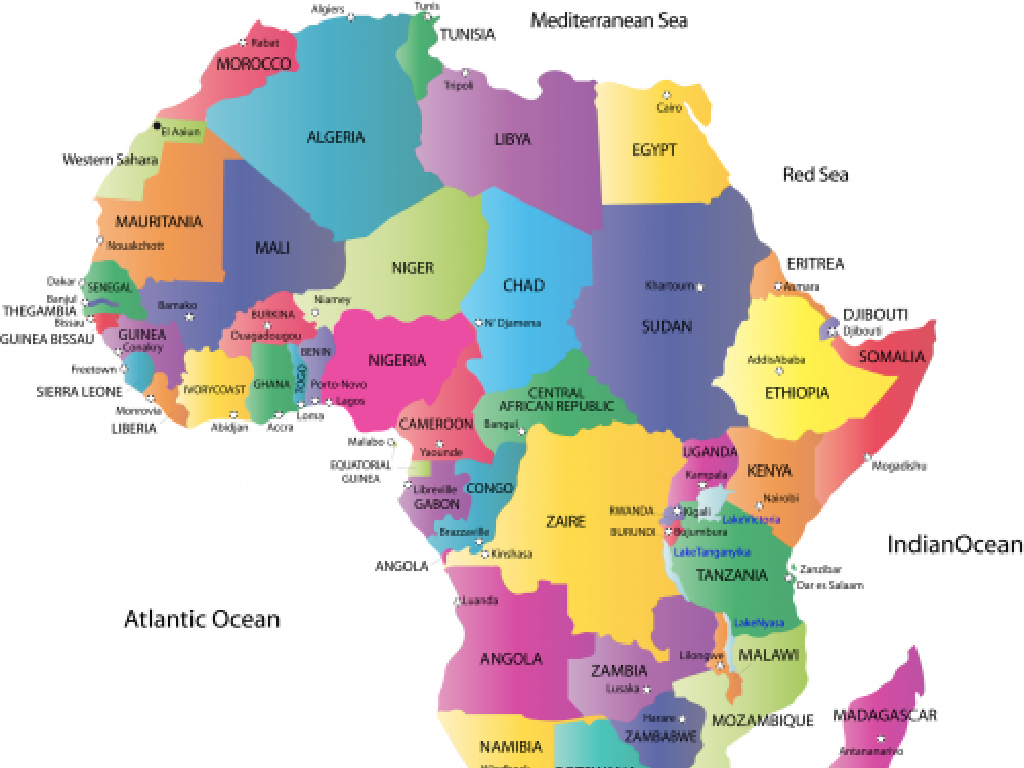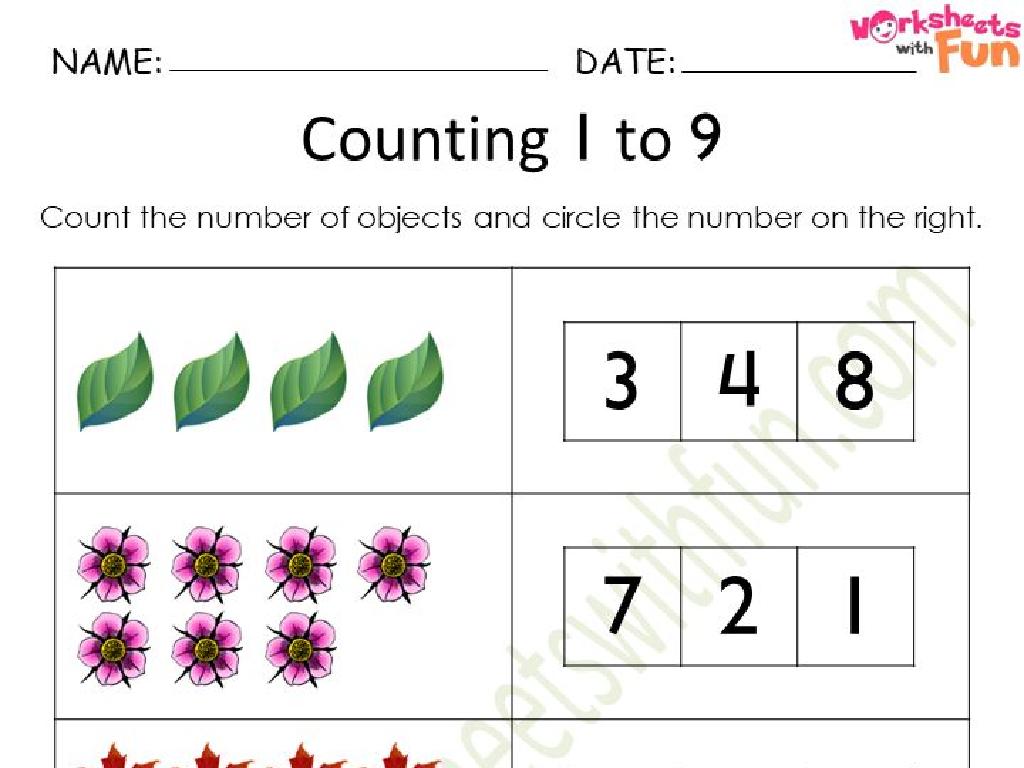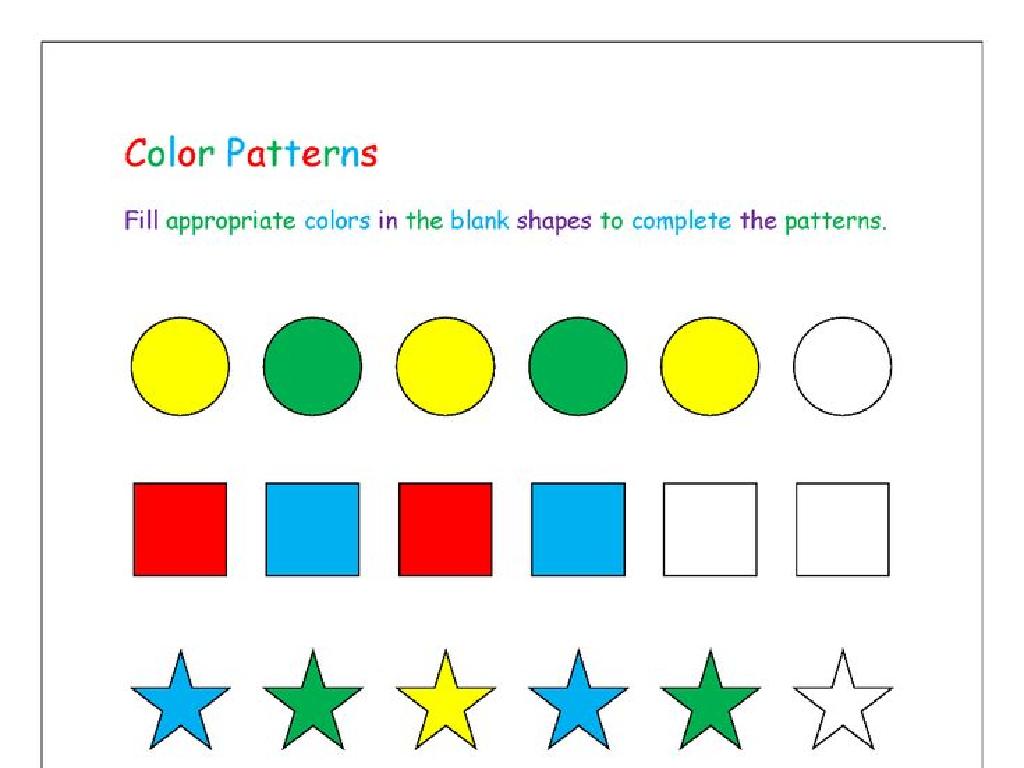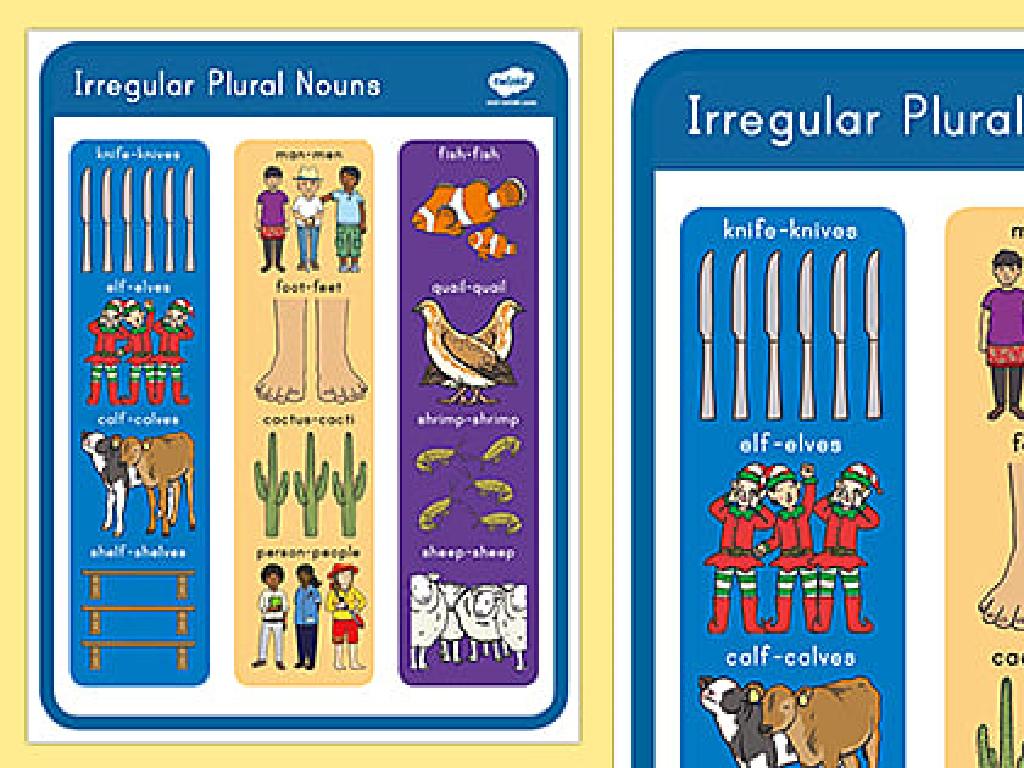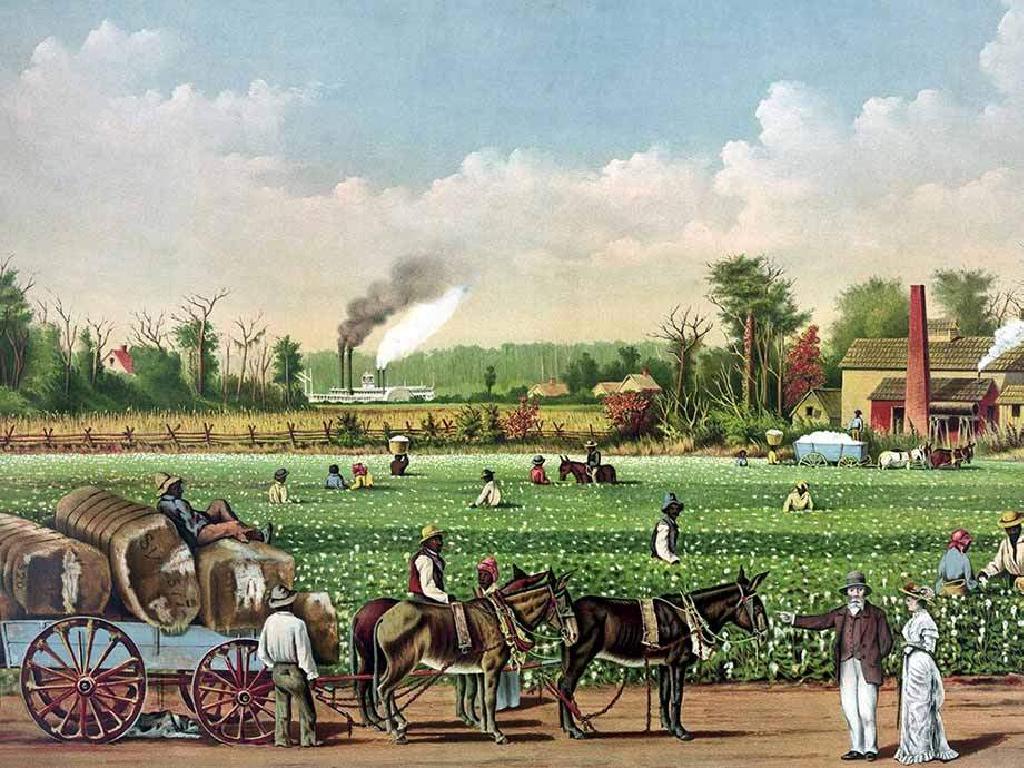Greater - Compare By Matching Up To 5
Subject: Math
Grade: Kindergarten
Topic: Comparing Up To 5
Please LOG IN to download the presentation. Access is available to registered users only.
View More Content
Comparing Numbers: What is Greater?
– Playing with numbers is fun!
– Comparing things: same or different?
– Understanding ‘greater’: more than
– ‘Greater’ means having more of something
– Examples: 3 apples vs. 5 apples
– Which is greater? 3 toys or 5 toys?
|
This slide introduces the concept of comparison in a fun and interactive way for Kindergarten students. Begin by engaging them with the idea that numbers can be playful. Explain that comparing helps us see if things are the same or if one has more. Clarify the term ‘greater’ by using simple, relatable examples such as comparing groups of apples or toys. Encourage the children to participate by asking questions like ‘Which pile is greater?’ and guide them to understand that ‘greater’ refers to the bigger amount. Use visual aids like actual objects or illustrations to help them grasp the concept. The goal is to make them comfortable with comparing quantities up to 5 in a playful and educational manner.
What is Comparing?
– Comparing: More or Less
– Comparing helps us see what is bigger or smaller
– Compare different things
– Like toys or fruits – which pile is taller?
– Comparing with numbers
– Using numbers up to 5, which is greater?
– Discover which has more
– We’ll use matching to find out!
|
This slide introduces the concept of comparison to Kindergarten students. It’s important to explain that comparing is a way to find out which things have more or less. Use tangible examples like toys or fruits to make it relatable. Show them how to compare two groups by counting items up to 5. Encourage them to think about size, quantity, and numbers. Activities can include matching games with objects, counting items in pictures, or using fingers to represent numbers and compare. The goal is to make them comfortable with the idea of ‘more’ and ‘less’ in a fun and interactive way.
Matching Game: Which Has More?
– Match objects into pairs
– Pairs are two identical objects
– Count pairs in each group
– Use objects like blocks or stickers
– Determine the group with more pairs
– The group with more pairs is ‘greater’
|
This slide introduces a matching game to help students understand the concept of comparing quantities. The activity involves matching identical objects to form pairs and then counting these pairs to compare two groups. It’s a hands-on way to visualize the concept of ‘greater than.’ For the activity, provide students with a variety of objects such as blocks, stickers, or small toys, and ensure they understand that a pair consists of exactly two identical items. After matching and counting, guide them to identify which group has more pairs, reinforcing the concept of ‘greater.’ Encourage students to articulate their thought process and reasoning as they determine which group is greater.
Understanding Greater Numbers
– Numbers show how many
– ‘Greater’ means more than
– If you have 5 candies and I have 3, you have greater candies.
– Comparing with numbers
– Use numbers to see which group has more objects.
– Finding the greater number
– Practice: Which is greater, 4 apples or 2 oranges?
|
This slide introduces the concept of greater numbers to Kindergarten students. Begin by explaining that numbers help us count objects. Then, define ‘greater’ as having more than something else. Use visual aids like counters or pictures to help students compare groups of objects and identify which has more. Encourage students to use the numbers to determine the greater amount. For example, show them 4 apples and 2 oranges and ask them to choose the group with the greater number of fruits. Reinforce the concept by providing several examples and allowing the students to practice with hands-on activities.
Let’s Practice Comparing Groups!
– Observe different groups of items
– Count each group’s items
– Determine the greater group
– Which group has more? Group with 3 apples or 4 apples?
– Remember: Greater means more!
|
This slide is designed to engage Kindergarten students in a practical activity to understand the concept of ‘greater’. Start by showing them different groups of tangible items, such as fruits, toys, or blocks. Guide them to count the items in each group carefully. Then, ask them to compare the numbers to decide which group has a greater number of items. Reinforce the concept that ‘greater’ refers to a larger quantity. For the activity, prepare several pairs of item groups with varying counts up to 5. Encourage the students to participate by counting aloud and selecting the greater group. This hands-on approach helps solidify their understanding of comparison and quantity in a fun and interactive way.
Class Activity: Greater or Less?
– Play a game with classmates
– Receive a worksheet with pictures
– Circle the group with more objects
– Find which picture group is bigger
– Discuss your findings with friends
– Share why you think one group has more
|
This activity is designed to help Kindergarten students understand the concept of comparing quantities up to 5. Each student will receive a worksheet filled with different groups of objects, and they will need to identify which group has a greater number of objects by circling it. This exercise will not only help them with counting but also with the concept of comparison. After completing the worksheet, students should be encouraged to discuss their findings with their peers, explaining their thought process. This will foster communication skills and reinforce their understanding of the concept. Teachers should prepare worksheets with clear, colorful images to capture the students’ attention and make counting easier. Possible variations of the activity could include using stickers, stamps, or drawing objects.
Review Time: Comparing Numbers
– Understanding comparison
– Identifying the greater number
– Which pile has more apples?
– Counting practice up to 5
– Let’s count together: 1, 2, 3, 4, 5!
– Using objects to compare
– Compare using toys or blocks
|
This slide is a review of the concept of comparison for kindergarten students. Begin by discussing what it means to compare two things – it’s like looking to see what’s different between them, especially which one is bigger or smaller in number. Use visual aids like pictures or actual objects to help students identify which group has more items. Reinforce counting skills by practicing counting up to 5 with the whole class. Engage the students by using familiar objects such as toys or blocks to make the comparison concept more tangible. Encourage the students to participate by asking questions and guiding them to count and compare objects in the classroom.
Celebrating Our Comparing Skills!
– You did a great job comparing!
– Now you can tell which is greater
– Let’s give ourselves a big clap!
– Proud of learning something new!
|
This slide is meant to conclude the lesson on comparison by matching up to 5. It’s a celebration of the students’ achievement in understanding how to compare quantities and determine which is greater. The slide is designed to reinforce their confidence and acknowledge their hard work. As a teacher, lead the class in a round of applause, and perhaps even a small cheer, to celebrate their learning. This positive reinforcement helps to build a love for learning and mathematics at an early age. Encourage the students to practice this skill at home with their toys or snacks, comparing small groups of items to reinforce today’s lesson.

